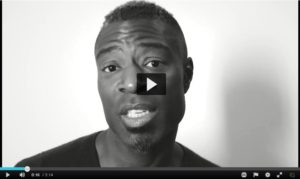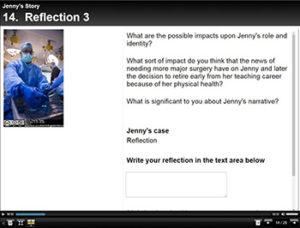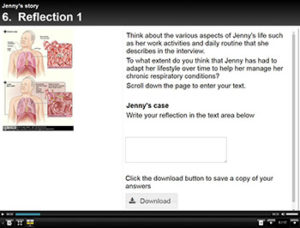We are pleased to announce that your 1819 module and programme sites have been created and are now ready to receive your content, so you can self-enrol now.
This year (as last) we have again chosen to differentiate between courses taught at the University and those delivered by our academic partners, to reflect the different needs of all concerned and so LearnTech has developed and updated separate templates, making for a more tailored student (and staff) experience.
The template and NILE Standards have been updated for 2018-19 following recommendations approved at the University’s Student Experience Committee and Faculty SECs. Please refer to these for up-to-date guidance on what to include in which section of your NILE sites when preparing them for the coming academic year.
You will note that in-site guidance has again been streamlined to allow for any necessary dynamic updates throughout the academic year, incorporating links to existing support, thus avoiding duplication and avoiding potentially conflicting advice. We have again included the ‘Support for Tutors’ and ‘Support for Students’ resources lists, so please also refer to these for your own assistance and for that of your students.
The template is designed to build on last year’s updating of content: you should therefore all find yourselves in a strong position for this year’s plan to copy over only what is required for the coming years teaching. N.B. If you are using Pearsons content, please do not copy over any site content without first contacting Learning Technology.
For those of you unfamiliar with the process of preparing your sites for the coming year, we have provided updated guidance on how to do this, as well as having Learning Technology team members on standby should you require extra support and assistance. Please email LearnTech Support in the first instance or contact your designated LearnTech.
In this video Mark Allenby, Senior Lecturer in Social Work, discusses how peer assessments have provided an opportunity for active learning with his first year BA in Social Work students and reflects on why he will be increasingly using peer assessments in his teaching at Waterside.
Mark introduced peer assessments as formative activities within his 17/18 module SWK1049 – Skills for Practice – using the NILE tool Self and Peer Assessments, in order to help scaffold his students’ learning for their forthcoming assessments.
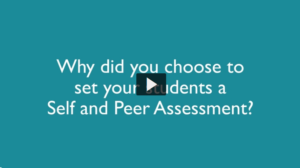
VIDEO – Mark Allenby reflects on NILE Self and Peer Assessments
Working with Learning Technologist Richard Byles, he has been documenting his students’ feedback using the digital post-it tool, Padlet, and by recording video feedback with student Angell O’Callaghan.
The majority of feedback for the activity was very positive, with many wishing to practice further. Students also identified areas where the activity could be improved. Comments included:
“I would like to use this more often throughout my degree.”
“It was very useful and I liked the autonomy. It was helpful to read others’ work.”
“It was good to take other’s interview skills on board and use them myself, helping me better and develop my own interview skills.”
“Scoring as a Yes/No or a 1/2 doesn’t give a lot of scope.”
“The process (of submitting) was somewhat convoluted but this may be due to it being a new activity.”
Mark says that “peer-feedback is a tool that fits perfectly with the move to ABL, as students are collaboratively engaged in evaluating their own progress towards goals that they have chosen for themselves”. In conclusion, he advocates that staff try the tool for themselves in ‘low risk’ formative activities with students and explain to them the benefits of peer assessments.
For more information on using Self and Peer Assessments please read the FAQ – How do I set up a Self and Peer Assessment in NILE? or contact the Learn Technology team: learntech@northampton.ac.uk
 NILE is integrated into the Active Blended Learning (ABL) process at The University of Northampton and we need to ensure that it is being used effectively by staff in order to provide a quality student experience.
NILE is integrated into the Active Blended Learning (ABL) process at The University of Northampton and we need to ensure that it is being used effectively by staff in order to provide a quality student experience.
Building on the guidance which was initially produced in January 2012, the framework has now been updated to cover the minimum standards which are expected on a NILE site. This was approved at University SEC on 28th February, 2018 and is subsequently being used as the basis for the new NILE templates which have been developed for the 2018/19 academic year.
Active learning approaches are great for getting new perspectives, sharing ideas, co-creating knowledge and trying out new skills. Many of the recommended techniques for active learning in the classroom focus on encouraging participation and discussion; after all, the seminar model is a familiar one, and verbal contribution is a good way to gauge understanding and to generate a ‘buzz’ in the classroom. Right?
Right, but… (there’s always a ‘but’). As we at UoN continue to explore active pedagogies, and with an eye on inclusion and our upcoming Learning and Teaching Conference, I want to share some conversations I’ve had in the past few weeks that turn a critical eye on classroom discussion models and unpack them from an inclusion perspective.
What is ‘participation’ for, and what does it look like?
The first of these was a conversation with Lee-Ann Sequeira, Academic Developer in the Teaching and Learning Centre at LSE. It was inspired by her session at the recent Radical Pedagogies conference, and also by her thought-provoking blog post examining common perceptions of silent students in the classroom. I won’t repeat the content of that post here (though I definitely recommend reading it), but I wanted to pull out some points from the discussion that followed, which might be of interest if you’re experimenting with active learning approaches.
In some subjects, oral debate is a disciplinary norm, if not an employability requirement: those studying Law, Politics, Philosophy and so on can expect to spend considerable time developing these skills. In these and many other subjects though, debate or discussion is also used to support the learning process, and sometimes as a way to check whether students have prepared for the class. So when asking your students to contribute, it can be helpful to think about what you want to achieve, and how your learning goals should inform the format of that contribution. For example, when one of your goals is to help students develop the skills to effectively present their ideas to an audience, you might need to ensure that every student has an opportunity to do this, but when your goal is to explore and develop an idea from a range of perspectives, is it still necessary that every single student speaks? Aligning the structure of the activity to your goals or learning outcomes can help students understand what’s expected and focus their effort accordingly.
Quality not quantity
As Sequeira’s blog post observes, the literature on active learning focuses a lot on “how to draw [students] out of their shells” (Sequeira 2017). In addition to this, a quick Google search on “active learning” will reveal a myriad of magazine-style opinion pieces on the subject, many of which seem to be in danger of advocating verbal contribution almost for its own sake, and effectively conflating speaking with learning. How then to ensure that when using these approaches, our active classroom doesn’t become hostage to those who talk most, or echo chambers of students that feel they need to be seen to be ‘participating’?
One way to prevent this is by clearly establishing, and then building towards, high standards for individual contributions. When planning your session, think about what you’d like the end result to look like, and what contributions might be needed to get there – always bearing in mind of course that you are just one perspective, so you may not be able to define the ‘finished product’ of co-creation in advance! What you can do though, is think about what a good contribution might look like. Can you provide examples, or talk through this with your students? Then as the discussion unfolds, you can encourage students to think about their own and each others’ comments – do they build on previous comments, do they bring in new evidence, do they advance the understanding in the room?
Thinking fast and slow
Of course, participation is not just verbal – and not just immediate! Active learning should not mean ‘no time to think’. When considering your learning goals, think about fast and slow modes of interaction – is promptness important or does the topic need deliberation and reflection? Silence can be a powerful tool in the classroom if we can resist the urge to fill the space, and giving students time to think before answering can often lead to more developed responses, as well as being more inclusive for those who are less confident, more reflective and/or working in their second or third languages.
Also, as Sequeira points out, participation can be multi-modal – could your students contribute in other formats? And not just to classroom discussions, but also to decision-making processes (choice of topic etc), and to feedback and evaluation opportunities? Thinking about ‘contribution’ more broadly might help to make these processes more inclusive too.
Supporting contribution: ‘productive discomfort’ and ‘brave spaces’
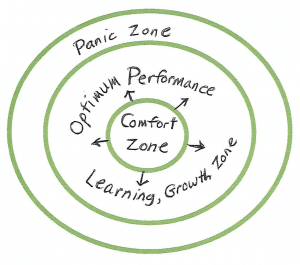 One of the goals of dialogic pedagogies is ‘productive discomfort’ – taking students out of their comfort zone and asking them to examine or defend their views – and being transparent about your pedagogy can also help students to understand this and recognize it in practice. This can be particularly important when working with students who are used to a more transmissive model of education, and are expecting you as the expert to tell them the answers. If your early discussions focus on sharing expectations and you know where your students are coming from, you’ll be able to plan, scaffold and facilitate more effectively.
One of the goals of dialogic pedagogies is ‘productive discomfort’ – taking students out of their comfort zone and asking them to examine or defend their views – and being transparent about your pedagogy can also help students to understand this and recognize it in practice. This can be particularly important when working with students who are used to a more transmissive model of education, and are expecting you as the expert to tell them the answers. If your early discussions focus on sharing expectations and you know where your students are coming from, you’ll be able to plan, scaffold and facilitate more effectively.
It can also help to acknowledge that collective exploration of ideas requires both intellectual and emotional labour, particularly as it can be intimidating to voice aloud ideas that are not fully formed. Much of the literature talks about creating ‘safe spaces’, but again this is an idea that merits a more critical inspection, particularly in the context of recent debates about free speech (‘safe’ for whom?). Another approach to this is the idea of ‘brave spaces’, replacing the comfort and lack of risk implicit in ‘safe’ spaces with an explicit acknowledgment of discomfort and challenge (Arao and Clemens 2013). Whichever approach you choose, creating trust will help to ensure students feel able to contribute, and there are a range of ways to do this, including discussion, modelling and constructive feedback. How you answer a ‘stupid’ question, whether or not you ‘cold call’ students, and how you respond to their input will all inform the norms of the learning space.
“The Socratic professor aims for “productive discomfort,” not panic and intimidation. The aim is not to strike fear in the hearts of students so that they come prepared to class; but to strike fear in the hearts of students that they either cannot articulate clearly the values that guide their lives, or that their values and beliefs do not withstand scrutiny.” (Speaking of Teaching, 2003)
Communication is a two way street
These ideas, and Sequeira’s observation about valuing active listening skills, led me on to the second conversation I want to share. Last week I attended a dissemination event for the ‘Learning Through Listening‘ project, led by Zoe Robinson and Christa Appleton at Keele. The project is looking at using global sustainability issues as an accessible context for developing conversations between individuals from different disciplines. This by itself is a laudable goal, as many of the ‘wicked problems’ of sustainable development will certainly need a interdisciplinary approach if we are ever to solve them. More broadly than that though, the project is also looking at developing active listening skills to support these conversations, and at listening as an area that is undervalued in education and in modern life. The event raised a few key questions for me, which I’ve noted below.
Active listening: the missing piece?
When we talk about communication skills with students, what do we prioritise? I work with many staff writing learning outcomes for our taught modules at Northampton, and much of the language we use for communication skills is proactive and performative: describe, explain, present, propose, justify, argue. Perhaps this is inevitable, as we need to make the learning visible in order to assess it, but there’s no doubt that these terms only give half of the picture of what communication actually is. By focusing so much on the telling, on the transmission of information and convincing of other people, are we giving students the impression that listening is less important? Are we encouraging the development of what Robinson described as the “combative mindset” so prevalent in 2018, and thereby inadvertently discouraging the development of curiosity, openness and willingness to learn from others – peers as well as tutors?
To rebalance the discourse around communication, the project at Keele used a number of activities to support the development of listening skills. One idea that really appealed to me was topping and tailing a series of guest speaker sessions – referred to as ‘Grand Challenges‘ – with a workshop before the lecture and a discussion session immediately afterwards. This allowed the students to think about what they already knew about the topic, and prepare to get the most of out of the session, and crucially also to follow up afterwards by sharing and developing some of the ideas it generated. Other interventions were slightly smaller scale, although perhaps easier to implement at a session or module level. Participants at the event last week got to try out some of these, and although I won’t cover them in detail here, the tasters below might give you some ideas for your classroom.
Learning to listen
One activity asked us to think about major influences that had shaped the way we as individuals see the world. We reflected individually on this, then shared what we felt comfortable with. I’ve never been asked to list these explicitly before, and it was interesting to actually see how everyone’s perspective is unique and created from a distinct combination of personal influences. We also talked about the factors that make it difficult for us to listen, covering everything from environment to agency to cognitive load. It was refreshing to realise that sometimes, everyone is bad at listening – and this was demonstrated when one of the session leads read aloud, probably only about a paragraph, and then pointed out that most of us would miss around half of any message we hear! I won’t spoil the final activity, in case you’re planning to go to one of the events, but also because the team at Keele will be releasing guidance on these as outputs from the project this summer. But needless to say it was fascinating – keep an eye on the website and the project blog for more.
Two more things struck me about the day overall. One was the emphasis on setup of the physical space. We spent part of the day seated in a circle, and part in rows facing a screen. This was a deliberate strategy by the project team and the contrast in terms of conversational dynamic was marked. This reinforced my view that we have the right approach with the classrooms at Waterside – it’s really remarkable what a difference movable furniture can make. The other thing I found interesting is that talking about listening made me (and the other participants too) suddenly very conscious of it. Even after the first activity, I found myself monitoring my communication with the other participants. Maybe it only needs one activity or discussion to highlight the issue, to begin to change how participants communicate?
Scaffolding discussion
The final point I want to make is something that was touched on in both of these conversations, and it’s about effective scaffolding. Both classroom and online discussion is usually more productive once the students have ‘warmed up’, got to know each other or developed a bit of confidence. There are lots of ways to approach this. In the event at Keele, for example, we started with a relatively uncontroversial topic – not many people in a university context will disagree that the UN sustainable development goals are a good thing, although they might disagree about how to address them. This can be a good way to introduce dialogic pedagogies, before working towards more heated or controversial topics (see this guidance from the University of Queensland on using controversy in the classroom). At Keele we also started with group discussion before we moved on to the one-to-one. This might be counter to the usual think-pair-share approach to scaffolding, but it did mean we had all spoken, and had some idea of where others in the room were coming from, before moving into more in-depth discussion. There’s also something to be said for reflecting on your question technique – are the questions you ask opening up or shutting down discussion?
These two conversations have given me lots to think about in terms of how we ‘do’ active learning. If you have any thoughts on this from your own experience, as always I’d love to hear them, so please add them as a comment. One last question to end with, thinking back to your last teaching session. Who in the room didn’t contribute, and why might that be?
References:
Arao, B and Clemens, K. (2013) “From Safe Spaces to Brave Spaces: A New Way to Frame Dialogue Around Diversity and Social Justice”. In Landreman, L.M. (ed.) The Art of Effective Facilitation: Reflections from Social Justice Educators. Sterling, Virginia: Stylus Publishing LLC, pp135-150.
Robinson, Z. and Appleton, C. (2018) Unmaking Single Perspectives (USP): A Listening Project [online]. Available from: https://www.keele.ac.uk/listeningproject/ [Accessed 27 March 2018]
Sequeira, L. (2018) Heresy of the week 2: silence in the classroom is not necessarily a problem. The Education Blog [online]. Available from: http://blogs.lse.ac.uk/education/2017/01/19/heresy-of-the-week-2-silence-in-the-classroom-is-no-problem/ [Accessed 27 March 2018]
The LearnTech team is pleased to share some updates and improvements around assessments and related processes in NILE.
Firstly, the Team had been tasked with exploring existing options for applying prompts for students within NILE for both Turnitin and Blackboard assignments as soon as the submission deadline had passed, and non-submission of assessments had been identified. The following solution will provide consistent standardised responses and so allow for appropriate action to be taken to support students. The text going out to students has been approved at the Student Experience Committee.
Updated guidance has been produced as a result and is now available. For Turnitin and Blackboard assignments, tutors have an option to send emails to students who have not submitted an assignment by the due date (including tests, surveys, graded discussion boards, journals or blogs):
Q. How do I send emails to non-submitters from Blackboard?
While staff may have used Turnitin’s ‘Email non-submitters’ option previously, you should be aware that students who are unavailable in your NILE sites will still receive these notifications. Our recommended guidance avoids this outcome.
Secondly, tutors will notice that they now have another option available to them when setting up assessments in NILE – Qwickly Jot. This tool allows you to select an image for students to markup and submit as a piece of work: for example, you may want your students to label a biological diagram or plot a graph. The submissions are linked directly with the Blackboard grade centre, so they can be viewed and marked directly from your module site. Further information and guidance on how to use the tool are available here:
And finally, those of you who are familiar with the LearnTech FAQs may have noticed that they have migrated to a new home, LibAnswers – a central place for Library and Learning Services help.
You can find these along with our NILE Guides by clicking the HELP tab at the top of NILE.
Advertising and Digital Marketing students got a glimpse of their professional futures this week when they got to work with a robot, a brain scanner, and a 3D virtual reality paint brush.
Click here to view video – Robots & Brain Scanners, UoN Digital Marketing Students with JISC Digilab
The group of second years got to try out all this hi-tech kit as part of a competition prize won by one of their lecturers.
Back in November, Senior Lecturer in Marketing Kardi Somerfield was named in the top 10 higher education social media superstars by JISC, an organisation that provides digital services to UK education.
As a reward, Kardi won the visit from their Digi Lab team.
“I was delighted to make the top ten, particularly because my students could benefit from this prize. It’s been great to have JISC and Digi Lab here, along with all this cool tech to experience.”
Over the course of a morning, the students had a chance to programme the robot for themselves – and for marketing students that meant imagining it working in places like a restaurant, hotel, or shopping mall.
Kardi said: “It was helpful to see some of the technology first hand, and with the robot it was far easier to imagine it in a service or marketing environment when you could see first-hand how people interacted with it.”
The 30 strong group also got to try out the Emotiv brain scanner – a wireless EEG headset that records brainwaves and overlays the pattern of electrical activity onto an image of a brain.

Image: Emotive brain activity data
“It detects responses such as interest, focus, and stress, so it’s perfect for testing how effective an advertising campaign might perform, or what consumers really feel about a product,” said Kardi.
Verity Nalley, from JISC Digi Lab team said: “The marketing students came up with a load of amazing ideas for how it could be used in promotional campaigns.”
Digital Marketing Student Karima Iredale had the idea of creating an app that would connect with wearable tech like the Apple Watch or the Fitbit that would give the user information on how focused or stressed they were.
“So it wasn’t just about the body activity but the brain fitness as well,” she said.
Her classmate Raluca Sandu agreed it was a great experience.
“It is much easier for us to now consider it as an option when we are in the position to develop a campaign or talk about viral marketing for a real job.”
The final bit of kit in the prize was a Google Tilt brush – which is conjunction with a VR headset, allows users to ‘paint’ both large and in 3D.
Summing up the benefit of the day, Kardi said the most important thing was to create an environment where students can share.
“We can train them in one particular technique today, but in a year’s time, or two years’ time, it will be something else – so it’s more important to build the capacity to embrace the new technology and keep learning, and acquiring, and deciding which things work for you. I think that’s where things like today can help as it might just be that sometimes you need to have things put in front of you to give you that opportunity to explore.”
Article: Published in Unify 18 Jan 2018 | Video: Learning Technology 2017
As an advocate for using technology enhanced learning Senior Lecturer in Cross Cultural Management Diepiriye Kuku-Siemons discusses his motivations, process, and reflections for integrating mobile technologies into the classroom.
In this first video, he provides some guidance on how he facilitates the use of mobile technologies when students are working in groups and describes his role as a facilitator in learning sessions. The purpose of this video was to share his own thoughts about the use of mobile technologies in teaching and learning with the wider academic community via the UN Staff Facebook group.
His second video describes how using mobile devices allows students to interact with research in a more immediate and accessible way and advises that activities should be structured in a way that ensures students are mindful of the purpose of the learning activities and are not distracted by existing social media channels.
To give a full picture of the activity, students from the group volunteered to provide feedback of their experiences using mobile devices in the classroom.
The film was produced with Learning Technologist, Richard Byles, during two sessions; in the first session students used mobile technology for research and brought them back to the group for discussion. In the second Diepiriye facilitated a classroom activity in which students discussed how mobile technology provides both opportunities and challenges for business.
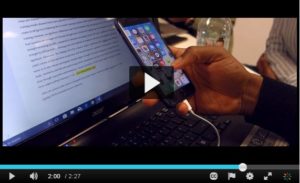
Click to view video – Using mobile technology in class with Diepiriye Kuku-Siemons
If you would like to see Richard Byles and Deipiriye Kuku-Siemons speaking about their ongoing work please register for the forthcoming LLS Conference on the 4th of May where they will be giving a presentation on ‘Facilitating mobile technologies in the classroom’.
On Monday 8th January around 1pm there was a routine housekeeping check on NILE to ensure that it was in line with the student record system data. Unfortunately, this did not work correctly and as a result, some students were made unavailable on sites. The students were not removed from the sites but just lost the ability to view these on their NILE list. Any assessment work previously submitted by the student to the site was retained.
The Learntech team along with IT Services worked on the problem as soon it was identified and finally corrected the problem for all students at 8pm on the 8th January. A number of students were directly in touch with the Learntech team during the afternoon / evening and access was restored for them during the day. We are working with the supplier to ensure that there is no repeat of this problem.
Kathryn Kendon has agreed that for students impacted by this problem with assignments due in 8th January and 9th January, revised deadlines of 10th January (for those with deadlines of 8th January) and 11th January (for those with deadlines of 9th January) will apply. The list of modules which were impacted by the problem have been identified and module leaders were contacted on Tuesday 9th January by the Student Records teams. The extensions will only apply to students impacted by the problem on the affected modules.
Welcome back and happy New Year from the LearnTech Team!
We are delighted to announce the new cycle of LearnTech lunchtimes. For those of you as yet unfamiliar with this training and as a reminder for everyone else, LT lunchtime sessions currently introduce some of our core NILE tools and some specific SaGE elements, including their potential applications and how these technologies can enhance your teaching and learning.
Please note, where more than one session per tool is being offered in the next cycle, the first (and where appropriate third) will be run in the Tpod at Park and the second offered virtually in a Collaborate virtual classroom. In addition, we will happily offer parallel sessions at Avenue Campus on a request basis; please contact Vicky Brown, Learning Technology Manager to arrange.
Please see below for the full schedule of offerings and booking links:
Kaltura/ MediaSpace (video)
Kaltura is the University’s single video solution; this is a chance for those who have already started to engage with this tool and those as yet to experience it. Areas covered include an introduction to MediaSpace; video capture using CaptureSpace; uploading video to MediaSpace; embedding video content in NILE; using quizzes in Kaltura.
Friday 19 January – 12:30-13:30 – Park Campus, Library, Tpod
Monday 12 March – 12:30-13:30 – Collaborate Virtual Classroom (link will become live ahead of session)
Tuesday 8 May – 12:30-13:30 – Park Campus, Library, Tpod
Please sign up here: http://bit.ly/2fWkTbG
Collaborate (Virtual Classroom)
This session will introduce those new to using online virtual classrooms (Northampton is licensed for Collaborate: Ultra Experience until 2020) as well as for those who are curious to learn about new functionalities now available in the tool. Topics may cover some of the following: setting up the tool in your NILE sites; inviting attendees; sharing files/ applications/ the virtual whiteboard; running a virtual classroom session; moderating sessions; recording sessions; break-out rooms.
Monday 12 February – 12:30-13:30 – Park Campus, Library, Tpod
Thursday 12 April – 12:30-13:30 – Collaborate Virtual Classroom (link will become live ahead of session)
Thursday 7 June – 12:30-13:30 – Park Campus, Library, Tpod
Please sign up here: http://bit.ly/2eG7mZR
Edublogs / MyPad (blogging tool)
Edublogs (MyPad) is the University’s personal and academic (WordPress) blogging tool and can be used in a number of ways to communicate and share learning resources. Topics covered may include: creation of individual / class student blogs; use of menus/ media; blog administration within modules; creation of class websites.
Wednesday 28 February – 12:30-13:30 – Park Campus, Library, Tpod
Wednesday 25 April – 12:30-13:30 – Collaborate Virtual Classroom (link will become live ahead of session)
Tuesday 19 June – 12:30-13:30 – Park Campus, Library, Tpod
Please sign up here: http://bit.ly/2f4BEUM
Assessments (Rubrics)
Have you heard about the use of rubrics in NILE and wondering what all the fuss is about? Want to find out how to grade your assessments electronically using rubrics? Curious to know how you can streamline your marking by using quantitative and/ or qualitative rubrics?
Come along to this LT lunchtime session to find out more about how to enhance and enrich feedback for your students using these tools in NILE.
Thursday 29 March – 12:30-13:30 – Park Campus, Library, Tpod
Please sign up here: http://bit.ly/2pNL0H8
Assessments (Groups)
Groups are a powerful tool in NILE that can be used to facilitate and manage group assignments, and enable communication and collaboration for students.
If you are interested in seeing how to easily create groups, set an assignment (e.g. Group Presentation or online Debate), AND potentially reduce administration and marking time, whilst still maintaining quality of feedback, then please sign up ….
Tuesday 30 January – 12:30-13:30 – Park Campus, Library, Tpod
Wednesday 23 May – 12:30-13:30 – Collaborate Virtual Classroom (link will become live ahead of session)
Please sign up here: http://bit.ly/2pNRmXb
In addition the following training sessions are currently scheduled for Xerte – N.B. these are 2.5 hours in duration:
Xerte (online content creation tools)
Xerte is a University supported tool used to create interactive e-learning and online content.
In this training session you will be introduced to the software templates, page types, features and tools available to enable you to produce an interactive e-learning session or online content provision.
You will also learn about the importance of instructional design for your e-learning and online content projects, and benefit from some useful hints and tips, technical advice and items relevant to developing e-content generally.
Park Campus, Library, LLS IT Training Room
Wednesday 24 January – 10:00-12:30 (LLS IT Training Room)
Thursday 1 March – 13:30-16:00 (LLS IT Training Room)
Wednesday 25 April – 13:30-16:00 (LLS IT Training Room)
Please sign up here: http://bit.ly/2fYwKpY
Spaces are limited, so do not delay, book today! Unable to attend on these dates? More will be offered on a rolling basis so watch this space. In the meantime, please visit our NILE Guides and FAQs.
The journey and the reflections
I was privileged to be invited to co-present with Liz Sear, Senior Lecturer, Foundation Degree in Health and Social Care, at the service user and carers forum on January 10th 2017 by Sara Simons, Senior Lecturer/Disability Co-ordinator Faculty of Health and Society.
Liz and I had previously developed an e-learning package following the story of ‘Fred’, a fictitious character. ‘Fred’ is a homeless man whose journey to hopeful recovery exposed service provider and healthcare involvement. This online case study supported students’ understanding of inter-professional and multi-agency working.
Satisfying the need to present complex information in a clear and understandable way to Health and Social Care students, we demonstrated how effective this online learning had been.
There is nothing better than a ‘real-life’ story for students to learn from, and with this in mind, we invited service users to get involved by sharing their story with us and give us their permission for their story to be told in online e-learning packages for students to access for their studies here at the University.
A service user put herself forward as a willing contributor and subsequent plans were put in place to audio record the service user telling her story. Liz and Anne worked together on storyboarding and building the two e-learning packages using Xerte software.
Sara Simons
Chronic Obstructive Pulmonary Disease (COPD) is the name for a group of lung conditions that cause breathing difficulties including chronic bronchitis, emphysema and chronic obstructive airways disease. People with COPD have trouble breathing in and out, due to long-term damage to the lungs, usually because of smoking. COPD (bronchitis and emphysema), affects an estimated 3 million people in the U.K. (NHS, 2015).
We were interested to learn about the physical and psychological implications upon an individual’s day to day life and levels of activity in living with a long term condition. As co-production is key to developing quality the Health and Social Care (Care Act, 2014), as supported by NUSU 4Pi National Standards, Nothing about Us without Us (2015), involving the service user in all aspects of the production was fundamental to the project.
Jenny was happy to be involved, and following a thorough briefing of what this would entail, Jenny used prepared guidelines of questions to structure her answer. Full written consent was provided by Jenny to record and use her story for student learning purposes. Using a structured interview format, audio recording took place and key props used by Jenny were photographed to support her narrative.
Once the recording was adapted into the story board format Sara acted as a critical friend to the layout, format and directed learning tasks. Once recommendations were adopted, Jenny was asked for her views and opinions and further editing took place. User testing was undertaken by a number of students who piloted the packages.
Liz Sear
In terms of my experience of working on this project I feel that it has left me with an enormous sense of admiration for the service user Jenny in terms of the challenges that she has had to face and overcome in her life, I think that she is very courageous person. It has also been a timely reminder that alongside the theory about the health and social care topics that we teach our students there is always a person whose story is unique and which reminds us that people do not experience ill health in the same way. As practitioners we need reminding of this so that we can strive to see things through the eyes of another person while not making assumptions about who people are, what they need from us and the reasons why they may behave in the way that they do. I feel that to do this successfully we must be prepared to be humble, as practitioners we can never ‘know it all’ and service users will often present us with insights about their experiences that can challenge our beliefs and prompt us to reflect upon our practice on a much deeper level.
Further information
Upon reflection, this has been an effective learning opportunity for all the contributors and we look forward to developing further packages this year.
Special thanks go to Jenny, who commented upon the fact, that this had been a really positive and rewarding experience.
Anne Misselbrook, Liz Sear and Sara Simons
Student Feedback
“I found this package very engaging and informative”.
“Found the package very interesting and emotional to find out how much Jenny had been through in her life”.
Recent Posts
- Blackboard Upgrade – December 2025
- Preparing for your Physiotherapy Apprenticeship Programme (PREP-PAP) by Fiona Barrett and Anna Smith
- Blackboard Upgrade – November 2025
- Fix Your Content Day 2025
- Blackboard Upgrade – October 2025
- Blackboard Upgrade – September 2025
- The potential student benefits of staying engaged with learning and teaching material
- LearnTech Symposium 2025
- Blackboard Upgrade – August 2025
- H5P (HTML5 package) content types meets the needs of Jim Atkinson, Staff Development Trainer
Tags
ABL Practitioner Stories Academic Skills Accessibility Active Blended Learning (ABL) ADE AI Artificial Intelligence Assessment Design Assessment Tools Blackboard Blackboard Learn Blackboard Upgrade Blended Learning Blogs CAIeRO Collaborate Collaboration Distance Learning Feedback FHES Flipped Learning iNorthampton iPad Kaltura Learner Experience MALT Mobile Newsletter NILE NILE Ultra Outside the box Panopto Presentations Quality Reflection SHED Submitting and Grading Electronically (SaGE) Turnitin Ultra Ultra Upgrade Update Updates Video Waterside XerteArchives
Site Admin





